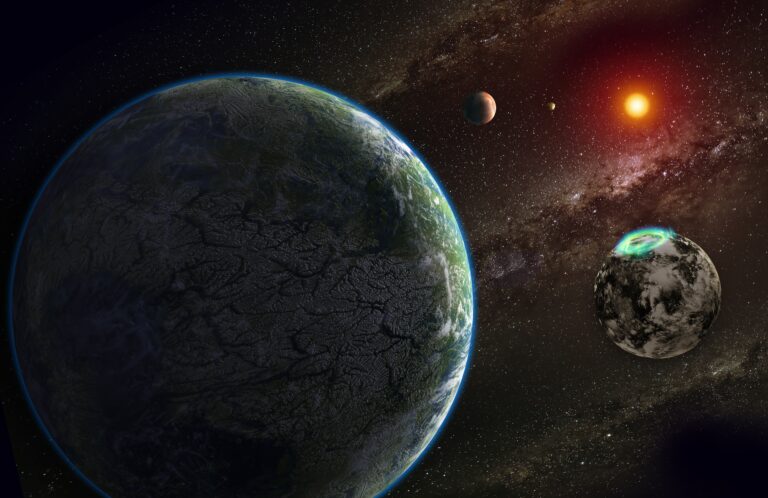
Key Takeaways:
More questions for Geoff Marcy
Geoff Marcy is a professor of astronomy at the University of California, Berkeley, and a well-known exoplanet hunter.
What was it like to spend 10 straight days working with the Keck Telescope atop Mauna Kea in Hawaii?
It was the movie Groundhog Day all over again. Every afternoon, sleep deprived, I would struggle out of bed at the Keck Observatory, stumble to the Remote Operations Computer Center, and begin focusing and calibrating the Keck Telescope’s spectrometer one more time, just as I had done for days. Then I would observe 120 stars during the long night, hunting for planets around them. At 6 a.m., I would stumble back to bed, hoping to get a little shut-eye, so I could start it all over again the next night.
What’s been the biggest “wow” moment of your career?
In October 1995, after four nights at Lick Observatory on Mount Hamilton in California, our Doppler data totally confirmed the planet around 51 Pegasi, the first planet ever detected around another normal star. I knew then that our own world and humanity would never be the same.
Astro Fasicnations: Sara Seager
Sara Seager is an associate professor of planetary science and associate professor of physics at the Massachusetts Institute of Technology.
What fascinates you most about exoplanet interiors?
It is amazing that just from a planet’s size we can tell roughly what the interior of a planet is made of. Let’s take Jupiter as an example. Jupiter is 11 times bigger than Earth, and from its size alone we could infer that Jupiter is made almost entirely of hydrogen and helium. What’s bizarre about a planet with massive amounts of hydrogen and helium (Jupiter has about 300 Earth masses worth) is that the planet has no solid surface, and so life as we know it cannot exist. Also the temperature deep inside of a giant planet gets way too hot for life.
Smaller planets (less than twice the size of Earth) are far more likely to be made mostly of rocky and iron material, like Earth and Venus are. We make computer models to tell what a planet interior is made of, based on a measurement of size and mass. A small planet with a low mass will be a great target to follow up with atmosphere measurements.
Astro Ideas: Jay Gallagher
Jay Gallagher is a professor of astronomy at the University of Wisconsin-Madison and the Editor-in-Chief of The Astronomical Journal.
Where else is the study of galaxies going?
We now have a good idea of the “geography” of galaxies. They mostly consist of dark matter that provides gravity to hold normal matter in forms ranging from gas to stars to black holes. Observations of young galaxies in the distant universe reveal a tumultuous state of affairs in the first 3 to 4 billion years after the Big Bang. Then, galaxies had chaotic structures, rapid star formation rates, and luminous active centers before settling down to their present forms by 6 billion years after the Big Bang, 7.5 billion years before the present.
Our efforts currently focus on how physical processes drive the evolution of galaxies. While we know the parts of galaxies, it is not yet clear how they fit together and interact over time. For example, puzzling relationships exist between the evolutionary states of the populations of stars within galaxies. Massive galaxies tend to contain older, redder stars, and thus are “dead and red.” Meanwhile, most of the galaxies making up the “blue plume” – systems with blue optical colors due to ongoing star formation – are lower mass. Evidently massive galaxies run out of gas most rapidly, but the details remain hazy.
We can expect progress from new classes of multiwavelength observations combined with increasingly sophisticated theory. On the ground, 8- to 10-meter optical/infrared telescopes will continue to decode the inner workings of nearby galaxies. And a variety of enhanced radio capabilities will track how gas behaves and detect light from energetic particles.
There also will be sensitivity jumps in the era of 30- to 40-meter optical telescopes, the James Webb Space Telescope, and the Square Kilometre Array radio observatory. All of this rests on theoretical foundations driven by improved understandings of cosmology, astrophysics, and astrochemistry realized through ever more sophisticated numerical simulations. In a decade, we will better know where our problems with galaxies lie.









